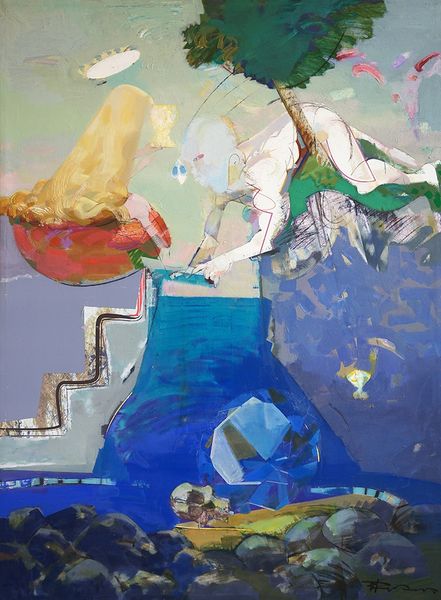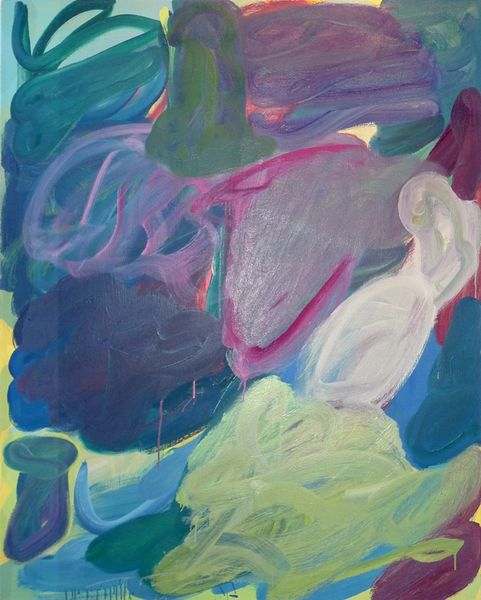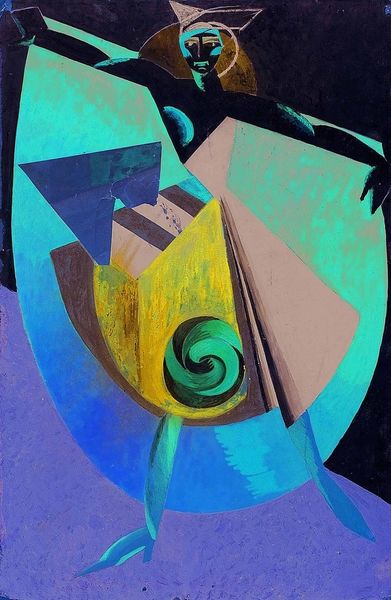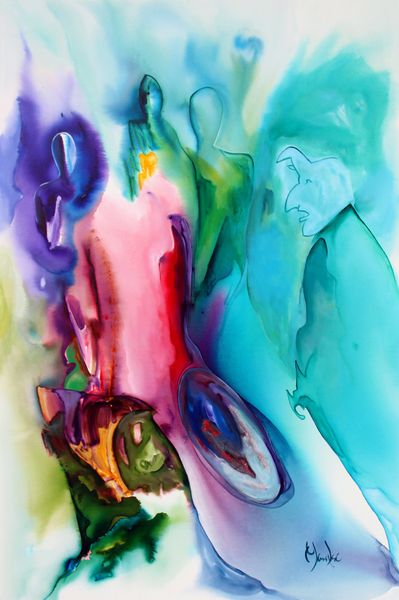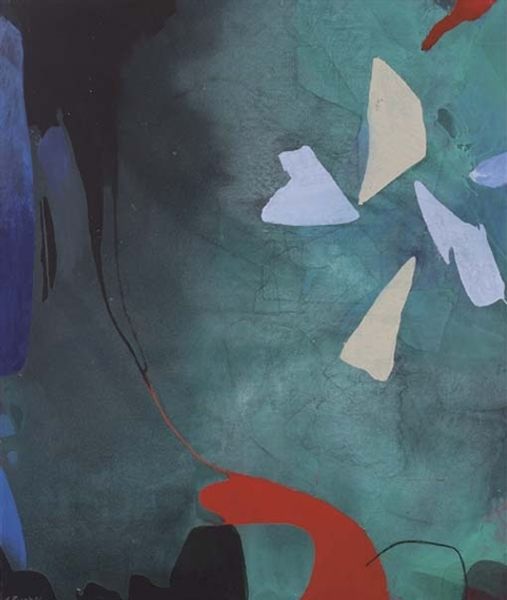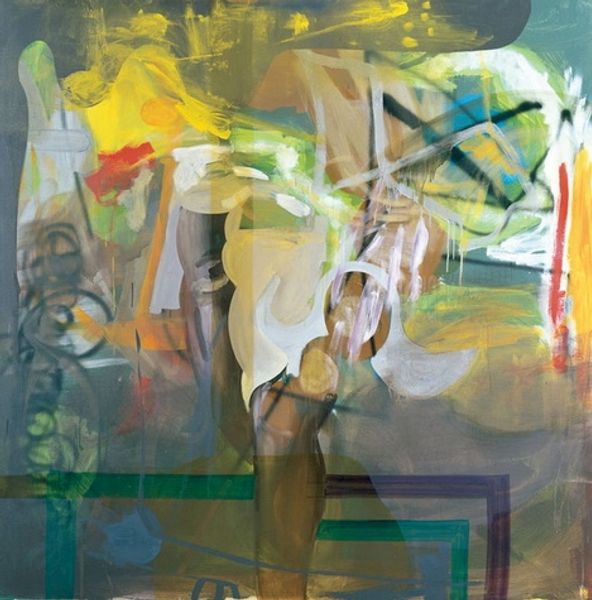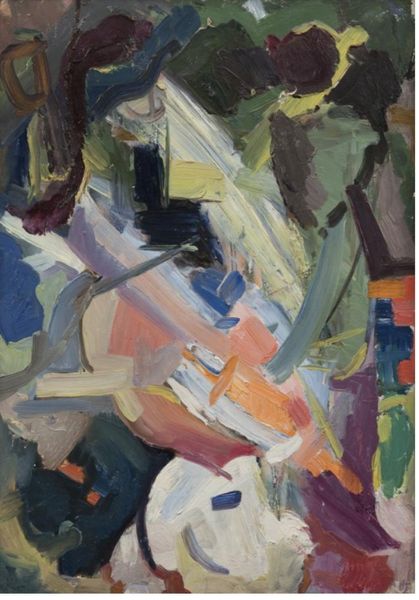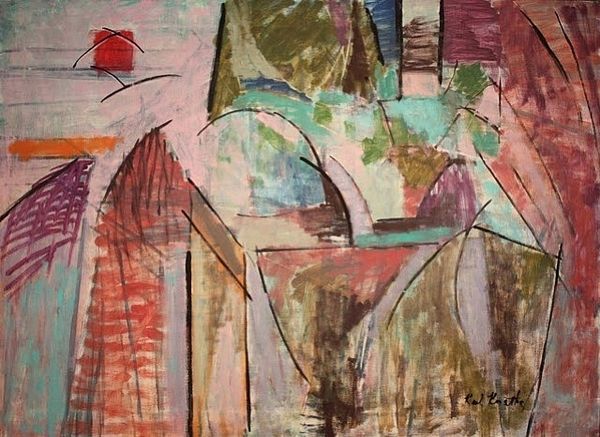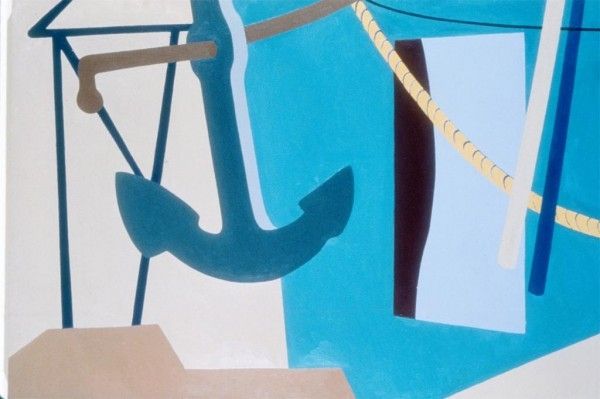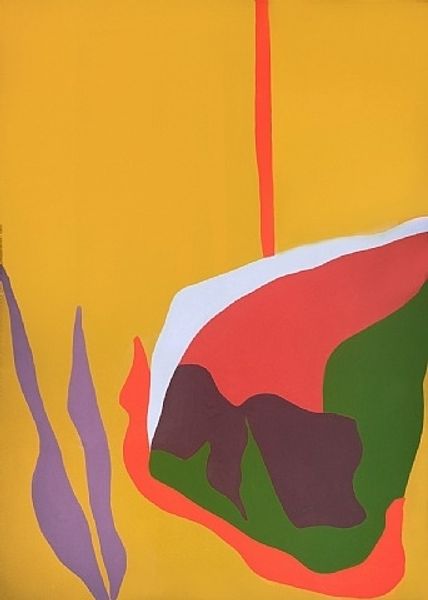
painting, oil-paint
#
painting
#
oil-paint
#
oil painting
#
geometric
#
abstraction
#
modernism
Copyright: Abidin Dino,Fair Use
Editor: Here we have Abidin Dino's "Pumpkin," an oil painting from 1955. I'm really drawn to its almost cartoonish form. It’s definitely not your typical still life, and the muted colors create a somewhat melancholic mood. How do you interpret this work? Curator: It's interesting you pick up on that melancholic mood. Considering the socio-political context of the 1950s, even a simple subject like a pumpkin becomes laden with meaning. Modernism, even in Turkey, served as a visual language for both escape and engagement with the world. The stark geometric forms might speak to the rapid industrialization and social upheaval occurring at the time. How might the display of "ordinariness" or, a pumpkin in this instance, confront the idealization of beauty standards typically portrayed at museums? Editor: That’s fascinating! I hadn't considered it as a form of social commentary, more like a formalist exploration of shape and color. It’s placed upon a pedestal like ancient sculpture—this might serve as evidence towards beauty standards. Curator: Precisely! Dino’s interesting play between abstraction and representation does ask us what is worthy of artistic interpretation, particularly at this period. Its role is amplified, knowing that museums typically upheld traditional artistic standards that may have excluded such representations. To add on, do you also see geometric forms that appear on an architectural base behind it? Perhaps an ode to more familiar structures? Editor: Yes, now that you mention it, there's almost an architectural sketch happening in the background. Almost like, if this "pumpkin" can be considered fine art, so can art that mimics geometry! Curator: Right! I think it's key we recognize not only abstraction for aesthetics but as a social commentary. Editor: I see what you mean! Considering the period and Dino’s history, it reframes the entire piece for me. Thanks for the insight.
Comments
No comments
Be the first to comment and join the conversation on the ultimate creative platform.
